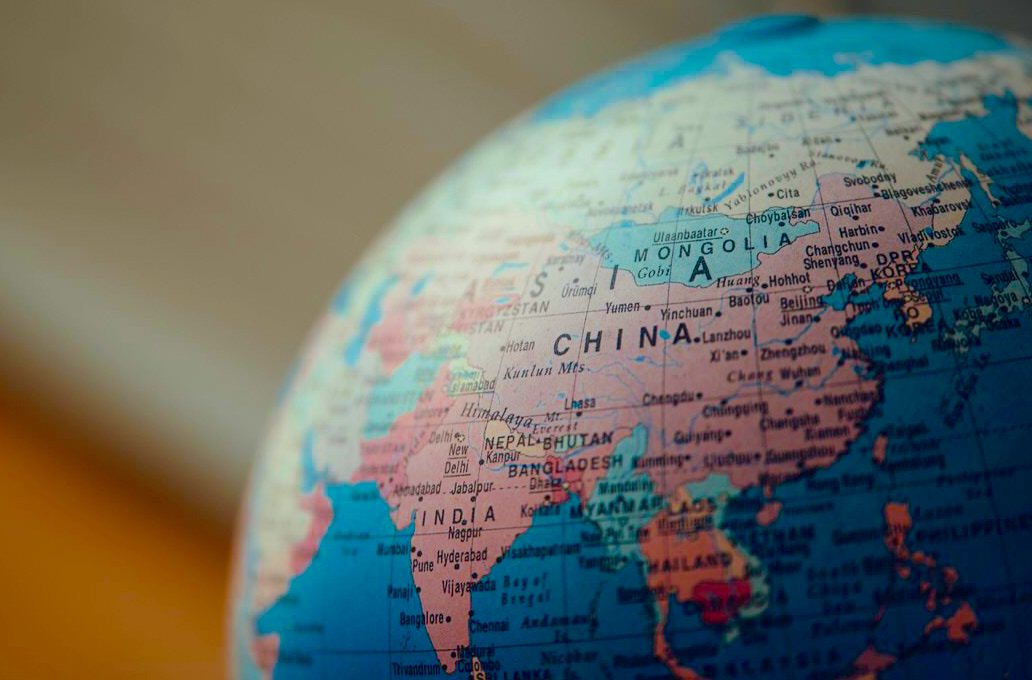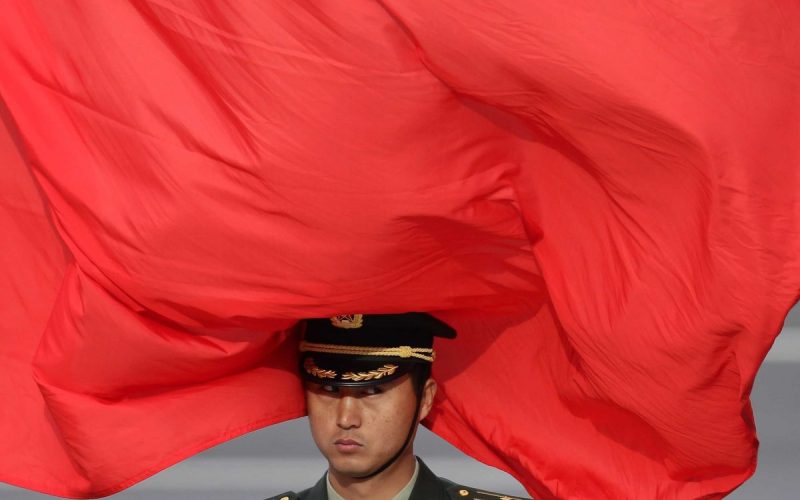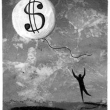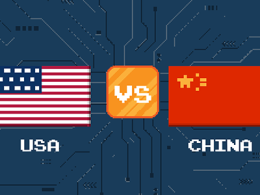by Rajan Menon via The National Interest.org,
Between 1978, the year Deng Xiaoping’s sweeping economic reforms were launched, and 2011, China’s GDP increased by an average of 10 percent annually, three times that of the global economy. Now the boom times may be over.
By mid-2013, economic growth had slowed to 7.7 percent. That’s still a roaring pace compared to the rest of the world. Europeans, Americans and even Japanese might say about China’s slippage, “We should all have such problems.” Still, in thirty-five years, the Chinese polity hasn’t had to handle a prolonged economic slowdown and one may be in the offing. Hence the debate on what the deceleration could portend should it get worse and linger.
Is China headed for upheaval? The argument that it is seems plausible. Eye-popping growth rates and the accompanying increase in living standards—and of course the state’s massive machinery of repression—have been critical to maintaining political stability and public support for the Communist Party. Or is Beijing so skillful, so flush with foreign-exchange reserves—and hence with the capital needed for priming the economy and managing financial crises—that slower economic growth is no big deal? Don’t look to the experts for enlightenment on which take is true: they see the same data but draw different conclusions.
We’ll get to those incongruous assessments soon, but first, some context on China’s remarkable achievements since 1978. (While some China watchers think Beijing cooks the books, they do concur that the country’s economic transformation has been breathtaking.) China’s GDP, measured in purchasing-power parity using current dollars, was $248 billion in 1980; by 2012 it had soared to $12.3 trillion. Per-capita GDP—a useful measure of prosperity, even though it doesn’t reveal income distribution, the inequality of which has soared in China—has likewise surged, from $205 (at purchasing-power parity) in 1980 to $11,316 in 2011. Together, massive investment, breakneck economic growth, sharp declines in population growth, the advent of universal literacy and big increases in the number of people with a higher education have helped pulled six hundred million Chinese out of poverty.
Other numbers illustrate China’s economic makeover. In 1978 China accounted for about 2 percent of the value of global exports. By 2010 its share had risen to 10 percent, and the total value was $1.5 trillion. This success in the global marketplace was achieved to no small extent at the expense of the world’s other economic behemoths, Japan and the United States, whose shares declined. What makes this particularly noteworthy is that China’s GDP, though it recently surpassed Japan’s, is still smaller America’s, which was $15.7 trillion in 2012. Yet the value of China’s trade last year was $3.87 trillion, eclipsing America’s total of $3.82 trillion. Even allowing for differences in the two economies’ relative dependence on trade this was headline-grabbing news. And it’s not just the value of what China sells the world but the difference that’s emerged in what it sells. Staples such as apparel, toys, shoes and basic electronics have been replaced by machinery and equipment, which account for over 50 percent of China’s exports, compared to just over 25 percent in 1995. Whether it’s energy, banking or telecommunications, Chinese companies have a global presence and are competing with American, European, South Korean and Japanese multinational corporations.
Okay, so what’s the problem then? It’s on this question that informed opinion is split. Paul Krugman is sure that the decrease in China’s economic-growth rate portends “big trouble” and that the signs are “unmistakable.” He and others pessimists chalk up China’s economic success to a combination of a vast rural population that has been available for induction into the industrial sector; low wages for workers, a function of an abundant supply of labor from the countryside; massive investment at the expense of consumption; and an exchange-rate policy that keeps the value of China’s currency low and its export earnings high.
The old paradigm, effective though it was, is starting to crumble. We’ve seen this before. The Soviet economy started slowing in the 1960s once it became harder - because of falling population-growth rates and the drying of the rural labor reservoir - to rack up big growth rates by pumping more people and money into manufacturing. The big difference is that while total-factor productivity (output per composite unit of labor and capital) didn’t pick up the slack in the USSR, in China it has increased significantly over the past two decades. Still, with Europe mired in recession, America posting anemic economic-growth rates and adding few jobs, and India’s and Brazil’s economies slowing down, it’s going to be harder for China to continue banking on big sales abroad to sustain rapid growth. So a lot hinges on whether Beijing finds a new way to sustain high growth, one that goes beyond basic industrialization and catching up to the West and sets trends in innovation.
The experts who reject Krugman’s apocalypse soon scenario are confident that Beijing will adapt to slower growth and diminished demand abroad by “rebalancing.” They don’t deny that China’s economy is slowing or that that could pose problems. They insist that China will simply shift to growth that’s slower and less reliant on investment and exports and that relies more on domestic consumption, with the government using its cash bonanza to boost employment and income as needed.
Sounds nice, but it may not be so easy. To begin with, the “rebalancing” metaphor is too pat. It conjures up the image of a bicyclist who’s tilting too far left or right and merely needs to adjust body weight a bit before pedaling happily onward. Would that it were so simple. Despite the huge increase in China’s per-capita income over the past three decades, today it is still only $9,300. It remains well behind America, Europe, Japan and South Korea and ranks 123rd in the world, closely trailing the Dominican Republic and the Maldive Islands. It also doesn’t help that 12 percent of China’s population lives below the officially established poverty line ($3,630). That’s not a big proportion; it’s smaller than America’s and represents a huge decline from over 80 percent in 1981, but it amounts to 130 million people who can’t generate much of what economists call “effective demand.” If you’re going to rely on consumers to power growth it helps to have a population with abundant disposable income.
Then there’s income inequality, another barrier to rebalancing. The greater it is in a country with a low per-capita income, the harder it will be to foster consumption-driven economic growth quickly. And China’s income distribution is highly skewed. One common measure of economic inequality is the Gini Index, which measures income distribution. The lower a country’s score, the more equal its income distribution, and vice versa. Sweden’s Gini score is 23, Germany’s 27, the EU’s as a whole 30, Japan’s 37, and America’s 45 (nothing to be proud about). China’s is 47.4. This is another reason why rosy forecasts involving rebalancing should occasion skepticism, the more so because in China high inequality (the super-rich elite can consume only so much) and low per-capita income are accompanied meager retirement and health-insurance benefits that don’t offer most Chinese much protection during adversity or old age.
Speaking of aging, China is doing so rapidly. And its total fertility rate, the average number of children a woman is projected to have during her childbearing years, is now 1.55 (2.11 is required to maintain the size of a population). This means that labor shortages loom, an increasing proportion of the workforce will consist of retirees, and revenue will have to be reallocated to care for the growing proportion of elderly. Yes, Europe and Japan also have aging populations, but the difference is that these are (despite Europe’s current problems) relatively wealthy places. Moreover, they confronted the demographic transition after they became prosperous. China is facing it now, when it’s not.
China’s challenges aren’t limited to its economy. Protests - sparked by outrage over corruption, environmental degradation, and the abuse of political authority - have risen sharply: the number of incidents reached 180,000 in 2010, double that of 2006. Despite big investments that have produced a literate and wealthier population in China’s minority regions, unrest among Tibetans and the Uighurs of Muslim-Turkic Xinjiang continues, not surprising given the vital role that the intelligentsia has played in producing nationalism. Chinese leaders no longer deny the dangers of separatism or whisper about it in secret conclaves. They speak about it openly and seem flummoxed as Tibetans continue to immolate themselves and riots and bombings persist in Xinjiang.
Now, the Chinese state has a massive a coercive apparatus to quell rebellions and spends more on it than on the People’s Liberation Army. Revolution is not around the corner. What we don’t know is how and to what extent the economic slowdown could produce instability and whether non-economic sources of discontent will prove harder to manage in times of hardship, especially in an age in which social-media-savvy youth have shown that they can communicate and mobilize in multiple ways.
Some commentators - Ian Bremmer among them - argue not just that China’s leaders can manage fine with a 7.5 percent rate of economic growth or even less but also that they may even welcome it. The proof presented to back up this claim is shaky at best. Bremmer assures us that Chinese officials have stated that they’re comfortable with the slowdown (I guess that settles it then) and he adds that slower growth will provide them an opportunity to ram through much-needed reforms. But the reforms being discussed will all require sacrifices by the elite and the masses and will therefore be harder to implement in (relatively) tough times. The rich and powerful will offer more resistance than the masses; they have more to lose and greater influence to use.
Then there are China’s main banks, which have been the source of credit for state-owned industries (SOEs), many of which are running red ink, and local governments that have borrowed heavily—they owed $1.7 trillion in 2011—to launch mega construction projects. It’s hard to believe that these banks, companies, and local political bosses won’t find it much tougher, albeit for different reasons, to conduct business as usual as the economy slows. With $3 trillion in reserves, the Chinese government has plenty of cash to throw at problems, and its central bank can step in when it’s a matter of bad loans made in local currency by local banks. Besides, China has a respectable debt-to-GDP ratio to boot: 50 percent. That’s up from 37.8 percent in 2011, but a far cry from Japan’s at 236 percent or ours at 107 percent. But with China’s banks having extended, at the government’s urging, trillions of dollars in stimulus following the 2008 global economic slowdown, banks’ adeptness at circumventing official lending limits, in a variety of ways and off the books, and the huge expansion of “shadow banks,” the true magnitude of a financial crisis that could be triggered by a sluggish (by Chinese standards) economy may be hard gauge.
No matter their phlegmatic public pronouncements, China’s leaders don’t regard bad bank loans and debt-laden companies and local governments with equanimity. They can’t be unruffled by a slowing economy that could aggravate the problems of creditors and debtors who are already in distress. The government already did a $650 billion bank bailout between 1998 and 2005, and now there are murmurs that another is in the works. Leaders everywhere are good at whistling in the dark and putting a gloss on things. China’s are no exception.
What’s the upshot? No one can predict accurately at what point slower growth will start producing political turmoil on a scale that’s unprecedented in the China that Deng made, what the magic number is, or even whether there’s an iron connection between economic and political crises. Yet the increase in capital flight from China and soaring applications for American and European residential visas by well-heeled Chinese suggest that the elite is hedging its bets. Krugman may be overstating things, but the rebalancing camp is too sanguine.
This much is certain: China’s leaders are in uncharted waters, and because of the diminishing utility of the established formula for rapid growth their maps may be of questionable value. There will be disagreements among them, not just about the appropriate the solutions but also about the roots of the problem. The one point of agreement will be that that tough decisions loom and will have to be taken under circumstances far less favorable than those that have existed during the last thirty-five years.














